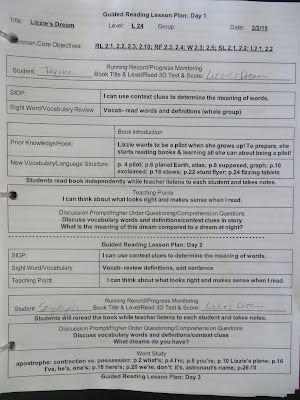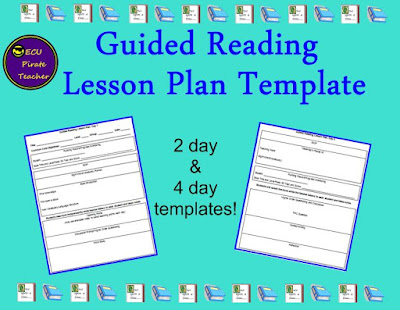When I taught in the classroom, I always ended up planning my guided reading lessons at home but was so frustrated with all the things I needed to take with me- my notebook, my guided reading books, the reading standards, word study and writing resources, TRC question stems, higher order questions, and more! One summer, I sat down and compiled everything I needed to plan my lessons into this Guided Reading Tips and Tricks flip chart.
It stays inside my guided reading notebook at all times so now I just bring my notebook and my guided reading books with me when I need to plan. I use it when planning guided reading lessons and also refer to it when teaching my guided reading lessons.
The first section is all about scoring running records. I refer to this while doing and scoring my daily running record because it has all the error symbols, a fluency and comprehension scoring rubric, anecdotal note examples, a section about determining whether the student is using M (meaning), S (structure) or V (visual) and it tells how to score the running record.
The next section is Sight Words/Vocabulary/Language Structure. I refer to this section when planning my guided reading lessons. It gives me a few ideas for teaching sight words and vocabulary, as well as a brief paragraph about when to discuss the language structure in a book.
This is one of my favorite sections to refer to while actually teaching my guided reading lessons. Have your students ever gotten stuck on a word and you just couldn't think of the right advice to give them?? This section has different prompts you can give your students to help them decode a word independently!
The next section has teaching points which are also helpful to refer to when planning and teaching the lesson. These teaching points help guide your lesson. Look at your anecdotal notes and then pick the teaching point you want to focus on. For example, are your students only using meaning to decode unknown words? The sentence reads: I am putting on my coat. But, your student says jacket instead of coat. You would want to focus on visual cues- get your mouth ready for the first sound. This way, your student could combine both meaning and visual cues to get the word correct. This section gives you multiple teaching points you can use to address student needs.
I use this next section, Higher Order Questioning, when planning my lessons. I always make sure to include at least one higher order question a day.
The next section gives you several Word Study strategies. This section is also very helpful when planning your guided reading lesson!
Do you use Read 3D testing? This section has question stems for each reading level. I pick at least one question for students to provide a written answer for each week.
The next section is all about Guided Writing. It gives several writing activities that you could use with your students.
Finally, the last section contains all the ELA Common Core Standards for grades K-2.
The best part of this flip chart is that it fits this Free Guided Reading Lesson Plan Template! The flip chart is in the same order as this lesson plan format which makes for quick and easy guided reading planning!
If you need an easy to use resource for guided reading make sure you check out this
Guided Reading Tips and Tricks Flip Chart.....
....and download the Free Guided Reading Lesson Plan Template that goes with it!
Guided Reading Tips and Tricks Flip Chart.....
....and download the Free Guided Reading Lesson Plan Template that goes with it!
















No comments:
Post a Comment